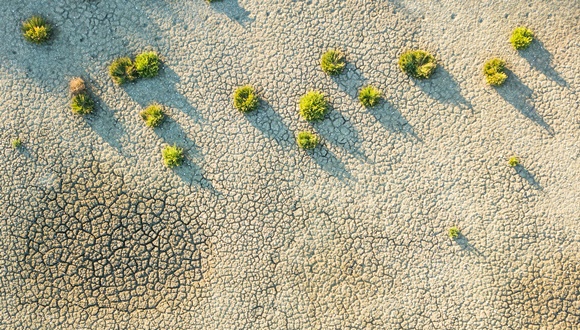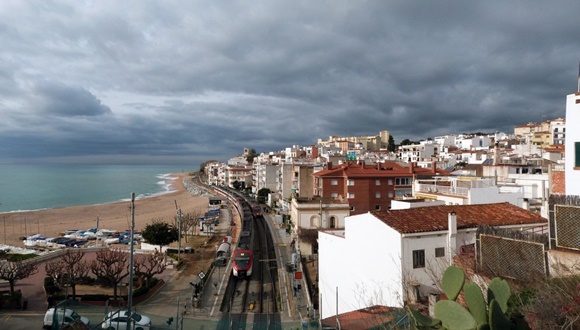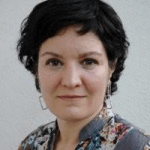Gabriel Borràs and the question of how we adapt to climate change
The incorporation into the UN scientific database of a recent indicator on the capacity to adapt to climate change promoted by the Generalitat de Catalunya raises an automatic question. What does it mean to be able to adapt to the global modification of the climate that we are facing?
And another one just below: how do we quantify this adaptive capacity? Some questions that Gabriel Borràs, biologist and head of the Adaptation Area of the Catalan Office for Climate Change (OCCC) of the Catalan government, can solve.
"99% of procedures used assess the impact of climate change or the risks arising. But not the efficiency of the footprint it lefts"
"The capacity to adapt to climate change implies being able to quantitatively evaluate the measures that we are carrying out and that allow us to be more resilient, less vulnerable", says Borràs, who makes it clear to what extent this is an open global debate without too many conclusions. "There is great silence about the efficiency of the measures applied to reduce vulnerability", in addition to a "great dispersion of methodologies and criteria". And he points out that "99% of the procedures used actually assess either the impacts of climate change or the risks derived from it. But they do not measure the efficiency of the footprint left by the global change that we are experiencing".
And he provides a classic and visual example centered on the Mediterranean: the main obvious consequences of climate change are the reduction in rainfall and the faster increase in temperature compared to other areas of the planet. For this reason, "the indicators that we have do not provide us with data on the efficiency of the measures we apply, but rather they give us the dimension of the risks, in this case, an increase in forest fires and less availability of water for ecosystems and for people", he explains.
No public administration in the world is known to have answered how we quantify our ability to adapt to climate change.
Answering the second question -how do we quantify this capacity for adaptation?- shows that there is no public administration in the world that has given an answer. Before preparing the indicator, the OCCC consulted other countries: from international conferences and discussion forums, to published articles. "We asked the world and tried to establish criteria and an obvious measure, such as saving water from domestic consumption", Borràs recalls. And given the negative answer, it can be said that there is no known work in the world promoted by a public administration that quantifies whether a territory is adapting well to climate change.

In view of the situation, the Catalan Office for Climate Change begins to develop its own methodology in collaboration with the team of Professor Josep M. Raya, from the Tecnocampus of the Pompeu Fabra University. "What we are trying to find out is whether the action of reducing water consumption in homes is allowing us to be less vulnerable to the impacts of climate change, in this case in Catalonia", clarifies Gabriel Borràs, adding that "we have worked on this global indicator as a measure of the efficiency of adaptation actions".
Go in the right direction
Knowing if the task being done is the appropriate one is closely linked to the use of public data by the indicator, which is available in an open format, requires little manipulation, provides a certain temporality (minimum of 10 years) and is linked to measurements. "Llike all statistics, the robustness of the methodology will be achieved if the evaluation period spans several decades", Borràs points out.
OCCC participation in the Life MEDACC project with CREAF and IRTA, an important test to design the first global indicator of climate change adaptation known in the world
Today there are a total of 42 indicators, which provide greater strength to a project that began with 29 in 2014. The opinion of its maximum promoter is revealing: "the participation of the OCCC in the Life MEDACC project Adapting Mediterranean Climate Change jointly with CREAF and IRTA it was an important field of practice for conceiving the global adaptation indicator."
How do we adapt
The areas covered by the indicator are biodiversity, water, forest management, agriculture, industry, mobility, health, tourism, urban planning and housing. Research and knowledge could not be included, "because we have not located a global indicator of at least 10 years", justifies Gabriel Borràs. The main basic conclusion is that 61% of the variability of the 42 indicators has to do basically with the use of resources, with eco-efficiency: water, energy and soil, basically. Therefore, "the more efficient we are in its use, the better we are adapting... and it is a very interesting conclusion."

The calculation of the evolution of data in the period 2005-2014 is expressed in the same way as the Spanish National Institute of Statistics explains the evolution of the CPI. "The exact data is not the important issue", clarifies Gabriel Borràs, "but how it has changed related to the previous year. In these 10 years it has grown by 8.74% and this means that in 10 years the indicator evolves positively, we are adapting and reducing our vulnerability.”
A methodology for the new millennium
The will is to update the indicator every 5 years. Therefore, the year 2023 will have to be reviewed, introducing new temporary data and/or expanding it with new metrics aimed at observing if 8.7% consolidates. "We have no context where we can compare, because it is the only known tool". However, the OCCC admits the probability that there may be a similar task already done, although when presenting it to The Climate Group (a network of non-state governments that represents 400 million people) no representative had any news.
When presenting the indicator to The Climate Group, a network of non-state governments representing 400 million people, no representative was aware of a similar initiative
This is the reason why the indicator developed by the Catalan Office for Climate Change "is not perfect, because it cannot be compared to anything", in the words of Gabriel Borràs. "We will know if it is useful once we can update it again, because just as mitigation is an old methodology, adaptation is relatively new in climate change, of the new millennium". In Catalonia, adaptation policies have been applied since 2012; the next evaluation should confirm whether the evolution is still positive. "Then we will see if it has grown, if it is stagnant or has decreased and we will have to analyze the factors that have caused it, such as the lack of public budget."
99% of countries measure the impact or risks of climate change, rather than efficiency. And here lies the interest of the UN to include the Catalan indicator in its scientific database.







